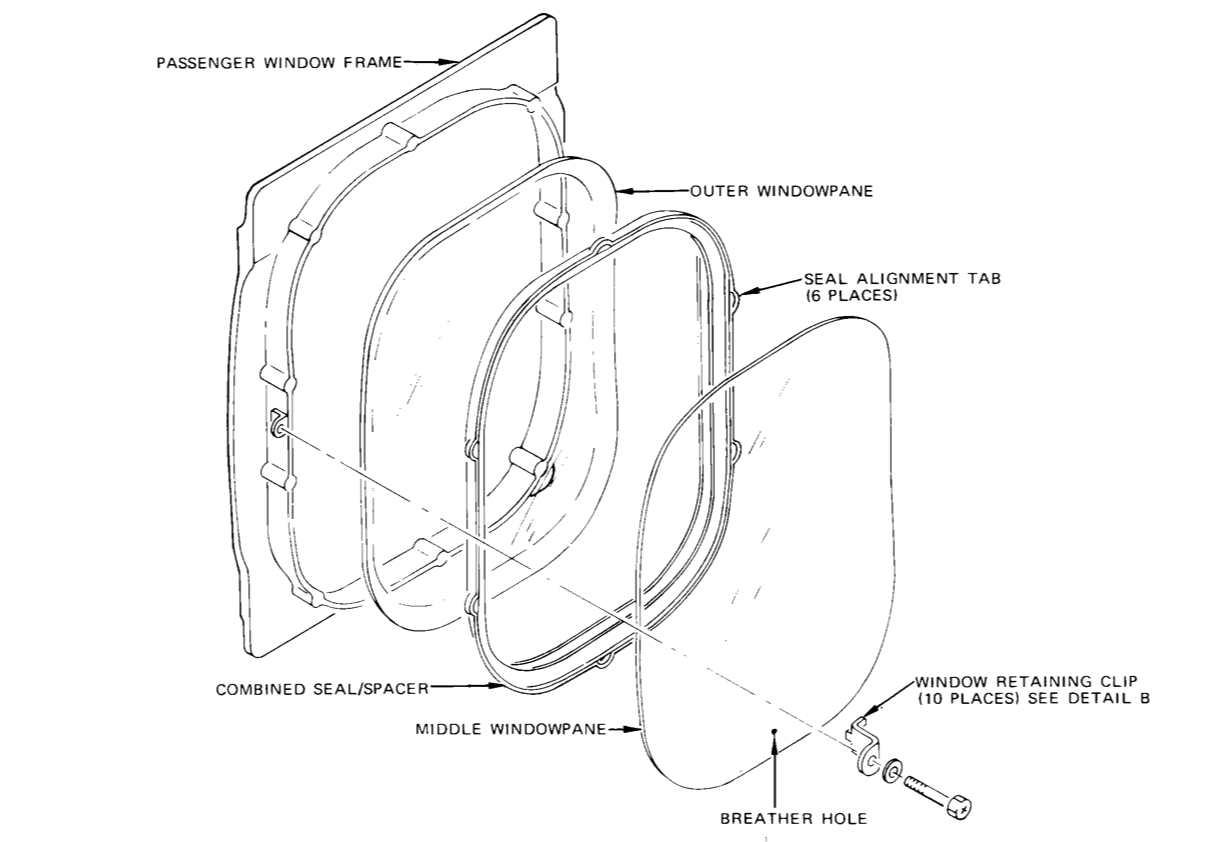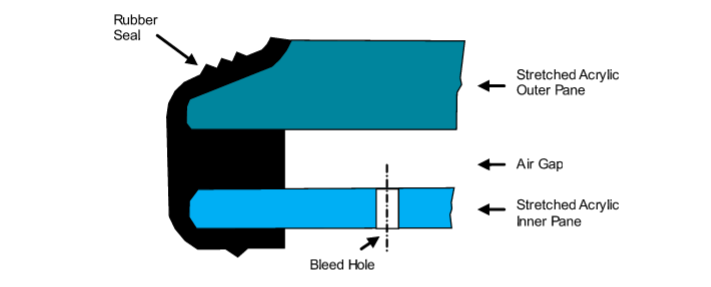Here’s a question you’ve probably asked at some point in your life. Most likely you’ve asked it in passing, while parked in seat 22A on a flight to… wherever: What’s with that little hole in the aeroplane window?
Photo Credit:
Pedro Moura Pinheiro | CC BY-NC-SA 2.0
The purpose of this tiny hole is the topic of countless online message boards. Most of these forums read like this 2006 discussion on airliners.net, where user Gh123 inquires about the hole and its function. “Is it for pressurization purposes?” they ask. Another user named Pygmalion responds: “The hole is there to equalise pressure between the inside of the cabin and the actual window which is the outer pane. The inner pane is just to keep you crazy pax from scratching the outer one which could make it crack.” Other users elaborate on Pygmalion’s explanation. They, too, reference pressure, outer panes, and pax (an abbreviation for “passengers”), along with other terms like “primary panes,” “failsafe,” and “crazing.” Many of the answers are correct, or partially correct, but for anyone unfamiliar with aircraft design or terminology, the explanations can be a little opaque.
To clear things up, I spoke with Marlowe Moncur, Director of Technology for GKN Aerospace, the world leader in passenger cabin window design development and manufacturing. I also tracked down a copy of a maintenance manual for the Boeing 737 (the most widely produced jet airliner in aviation history), which includes some illustrations that are helpful in understanding the purpose of the “breather hole” — for this is the little window-hole’s official name — in the context of the cabin window as a whole.
The passenger cabin windows on most commercial aircraft consist of outer, middle, and inner panes. As you might expect, these designations reference where the panes are positioned relative to the external and internal portions of the aircraft. All three of these panes are made of acrylic, a synthetic resin prized for its transparency and resiliency, but only two of them — the outer and middle panes — are said to be structural. These structural panes are installed in a rubber perimeter seal and housed in the plane’s fuselage. The internal pane, which Moncur calls a “scratch pane,” lives on the passenger-side of the window assembly, and is mounted in the sidewall lining of the cabin; its nonstructural nature means that it is excluded from diagrams like this one, which show how a typical cabin window is assembled in 737s:

The combined seal/spacer, which is labelled as such in the above diagram, puts a little distance between the outer pane and the middle pane. It is a key component in what Marlowe calls the “two-pane air-gap design,” in which “the outer pane is the primary structural window, and carries the cabin pressure during flight.”
Primary structural window — what does that mean? At cruising altitudes of around 10,668.00m, atmospheric pressure (i.e. the pressure outside the aircraft) is about 1kg per square inch. That’s way too low for bodily functions important at such altitudes, e.g. consciousness; so, inside the cabin, pressure is artificially maintained at roughly 5kg per square inch — about what you’d experience at an elevation of 2,133.60m. The bigger the pressure differential between air outside the plane and air inside the plane, the bigger the strain placed on the plane’s various cabin structures, including its windows.
“The outer pane is the primary structural window” simply means that, under normal conditions, the outer pane bears all of the stress of cabin pressurization. The inner pane is redundant, says Moncur, a failsafe “designed to hold the cabin pressure in the event that the outer [pane] is fractured,” which he says is “an extremely rare event.” (According to the 737 maintenance manual, the middle pane is designed to maintain 1.5 times the normal operating pressure at 70 degrees Fahrenheit. Moncur adds that the “effectiveness of the two pane design is rigorously tested during window qualification.”) Moncur provided me with the following diagram of a typical cabin window configuration, which illustrates the relative thickness of each pane, and the gap that separates them (note that in this diagram, the “inner” pane is technically the middle pane, albeit the inner of the two structural panes):

Equipped with this understanding, the purpose of the breather hole, which is located near the bottom of the middle pane, becomes clear: it serves as a bleed valve, allowing pressure between the air in the passenger cabin and the air between the outer and middle panes to equilibrate. This tiny little hole ensures that cabin pressure during flight is applied only to the outer pane, says Moncur, thus preserving the middle pane for emergency situations.
According to the 737 maintenance manual, the two-pane air-gap design is also meant to “preclude fogging and frosting,” though countless photographs (including the one at the top of this post) illustrate that the assembly often fogs and frosts, anyway. It’s safe to say, then, that the two structural panes, and the breather hole that links them, constitute a failsafe, first and foremost. The integrity of the assembly is so important that damage to the middle pane can actually ground a flight. The 737 maintenance manual cautions, in all caps, that an aeroplane with a cracked middle pane should not be pressurised. “PRESSURIZATION INTEGRITY OF FUSELAGE WITH ONE PANE CRACKED IS CRITICAL,” the manual reads, “BECAUSE FAIL-SAFE FEATURE HAS BEEN ELIMINATED.”
The manual includes a similarly urgent warning regarding crazing, a term used to describe a series of very fine fissures that form perpendicular to the surface of the window. In light of all this information, the purpose of the nonstructural, “scratch” pane is seen as essential, as well. By helping prevent crazing, cracks, scratches, and chips, the innermost pane helps maintain the structural integrity of the middle pane, and the window apparatus at large.
